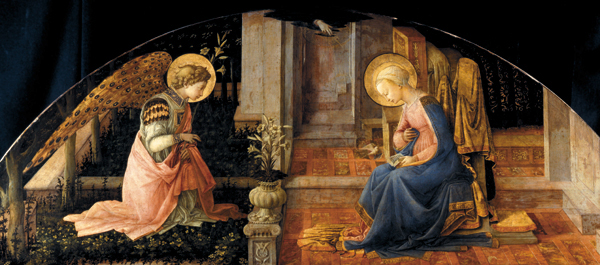Image Details

Photo by the National Gallery, London
Her head bowed in humility, the Virgin Mary receives a divine visitor at the threshold of her home, in a mid-15th-century Annunciation by the Florentine painter-monk Fra Filippo Lippi. One of the most popular subjects in Christian art, the Annunciation is the moment—recounted in the Gospel of Luke—when Mary is told by the angel Gabriel that she has been chosen by God to bear his son, Jesus. In response, Mary asks: “How can this be? I am still a virgin.” When the angel explains, “The Holy Spirit will come upon you” and “the power of the Most High will overshadow you,” Mary agrees, “So be it” (Luke 1:34–35). A survey of Annunciation paintings reveals how Christians have struggled to understand just how this can be.
In Lippi’s painting, the angel’s eyes are fixed, like Mary’s, on a dove—a standard symbol in art for the Holy Spirit—hovering just in front of the Virgin’s womb. The hand of God, having just released the dove, can be seen at the top of the painting in the stairwell of the house.
